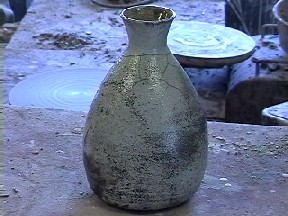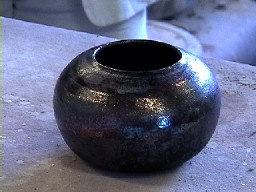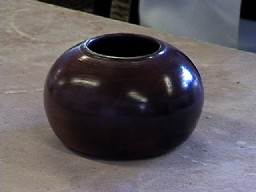Personal Resources Page |
Joy Creighan & Mary Hayes Integrating Historical and Cultural Contexts Within Instruction Involving Performance and Production, as Reflected at the Pennsylvania Governor's School of the Arts |
| On Wednesday, July 25, 2001, participants from the Pennsylvania Governor's Institute for Arts Educators traveled to Mercyhurst College to observe students engaging in various forms of creativity. Emphasis was placed on the observation of the Proposed Academic Standard 9.2. |
| The
following examples showed the implementation of Proposed
Academic Standard 9.2. Resources and Links: Observation #1: Sculpture Sculpture dates back to the times of ancient Greece where freestanding sculptures were the popular form of art. Students in this discipline were instructed to create an armature and use plaster in order to develop a form. An explanation of the historical, cultural and social aspect of ancient Greek sculpture was introduced. (9.2.A) Students produced common themes, forms and techniques used from this era. (9.2.L) Additional Websites: Lesson Plan: http://home.uleth.ca/sfa-gal/TWAM/edu/plaster.htm Examples: http://www.fassbendergallery.com/George/ageorge00a.html Video example: Aram, a student, explains the creation of the piece. Observation #2: Raku This form of pottery was developed in Japan over 400 years ago for the Zen Buddist Masters as their Ceremonial Tea Ware. This technique is used a fast firing method and cooled rapidly when removed. Students were able to relate works chronologically to historical events (9.2.B), analyze the pottery from its historical and cultural perspective (9.2.D), analyze how historical events and culture impacted the forms, techniques and purposes of raku (9.2.E), pertinent vocabulary (9.2.F). A. Raku Method B. Kiln Firing Method Additional Websites: Raku Firing: http://www.dmh.net/raku98/firing.htm Raku Examples: http://www.geocities.com/Tokyo/2850/ Observation 3: Dance Students were instructed in modern dance techniques by guest dancers from Group Motion. The type of technique was called Wigman which is one of the early forms of dance. Standards which were covered included 9.2.C and 9.2.D. The instructor included background information such as current events in world politics, economic structure, geographics, and social standing. The movement of the body versus the music motivated the dancers to find the dynamics and elements of different rhythms. Observation 4: Plaster form of face Students were instructed in plaster formation of the face to include standards 9.2.C in modern form. Students created a plaster mold of a female student by placing vaseline and clay around the face to prevent the plaster from running. Students placed straws up her nostrils in order for her to breath. A wooden frame was places around her face and plaster was poured over the face and the student had to lay still for approximately 7 minutes for the plaster to set. The student communicated with the instructor by giving the thumbs up sign to let him know that she was ok. |


